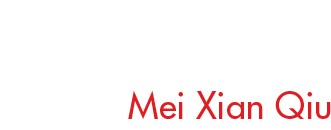Trans Angeles, a crossover experimentation from Southern California – curated by Peter Frank. Opening April 12, 2014 at the Wilhelm Morgner Haus Kunstmuseum in Soest, Germany.
Featuring Fatemeh Burnes, Cosimo Cavallaro, Gisela Colón, Gronk, KuBO, Maya Mercer, Kirk Pedersen, Mei Xian Qui, Katsuhisa Sakai, John White, Jae Hwa Yoo, Zadik Zadikian. Los Angeles has become recognized as a world hub of artistic activity. Long a center of art practice and education – more important on the American scene than any other center besides New York – L.A. secured its place in world art over the past two decades, and now produces young art stars and “re-discovered” veteran experimentalists widely respected in the international discourse.
One of the characteristics of the Los Angeles art scene making it so internationally vital is the willingness of its artists to experiment – indeed, to maintain a tradition of experimentation and unorthodox practice that goes back at least a half-century. And one of the most significant factors here is the easy transition Los Angeles-area artists make between concepts, disciplines, even styles. We in the art world have come to accept that artistic production is distinguished by sensibility rather than by style or even discipline; but in L.A. interdisciplinary practice is almost presumed, collegiality spills over readily into collaboration, and a single artist’s oeuvre can so often comprise artworks that are parallel or even hybrid. Similarly, the lives of the artists themselves are fluid and multi-layered. Many come from other places, and many others go back and forth between them. Many transit between identities and life conditions. Many make their living far from the studio but bring into the studio what they learn on the outside.
“Trans-Angeles” thus demonstrates the inner as well as outer “globality” of the southern California artist. He or she can practice, or build on practices, associated with Los Angeles. She or he can also reflect the peculiarities of the climate, the terrain, or even the local industries (Hollywood not least). But in his or her metamorphic notions of artistic practice, all this becomes part of something bigger, a sense of the world – not just L.A. itself – as a site of transformation, translation, and even transcendence.

